Wouldn’t it be great if there was a wonder-food you could consume in as large a quantity as you desired, without the worry of any negative effects?
Unfortunately, until we discover such a food, we’re stuck watching our figures and carefully crafting our diets to ensure we stay healthy and fit. However, there are some foods you can prioritize over others that, because of a mixture of factors, are actually capable of filling you up without causing weight gain.
Foods high in protein and fiber are the main focus here, because they live up to that promise. You can chow down on these foods without feeling guilty later.
So, without further ado, here are 10 filling foods that won’t make you fat.
1. Broccoli
 If you’ve been reading this blog for some time now, you’ll know of my immense love of broccoli. Even if I didn’t think it was delicious, I’d still probably force myself to eat it because of all the nutritional value it has to offer.
If you’ve been reading this blog for some time now, you’ll know of my immense love of broccoli. Even if I didn’t think it was delicious, I’d still probably force myself to eat it because of all the nutritional value it has to offer.
Broccoli has a high fiber and water content, meaning it’s got relatively few calories per serving. If you’re ever trying to figure out the best way to fill your dinner plate, covering half the plate with broccoli is a good way to fill yourself up and be guilt free.
Because of how packed broccoli is with fiber, it’ll also keep your digestion regular, and the antioxidant sulforaphane found within it will help support the healthy bacteria living in your gut, helping you fight against cancers.
And, thanks to broccoli’s high amounts of calcium, it may be inhibiting your body’s ability to store fat – eating a lot of it has been associated with, though not yet definitively linked to, weight loss from the troublesome midsection.
2. Eggs
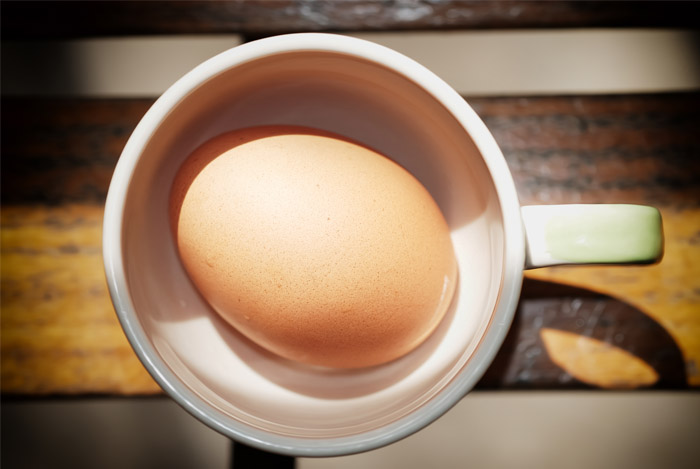 Some consider eggs to be the gold standard of protein. They’re simply one of the best sources out there for protein content – that’s why so many fitness gurus, bodybuilders, and athletes eat them constantly.
Some consider eggs to be the gold standard of protein. They’re simply one of the best sources out there for protein content – that’s why so many fitness gurus, bodybuilders, and athletes eat them constantly.
Ever seen that movie where the guy drinks a glass of raw eggs every day for breakfast? You know the one. There’s a reason for it.
Eggs are cheap, can be made in countless ways, and are one of the most convenient ways of getting as much protein as possible per calorie into your body. But, make sure that when you eat them, you consume both the white and the yolk, as around half of the total protein in any given egg is found in the yolk.
Additionally, eggs also contain vitamin D and “good” cholesterol, both of which are good for toning and muscle building.
So, if you’re looking to get a great protein kick start to your day, crack open some eggs.
3. Quinoa
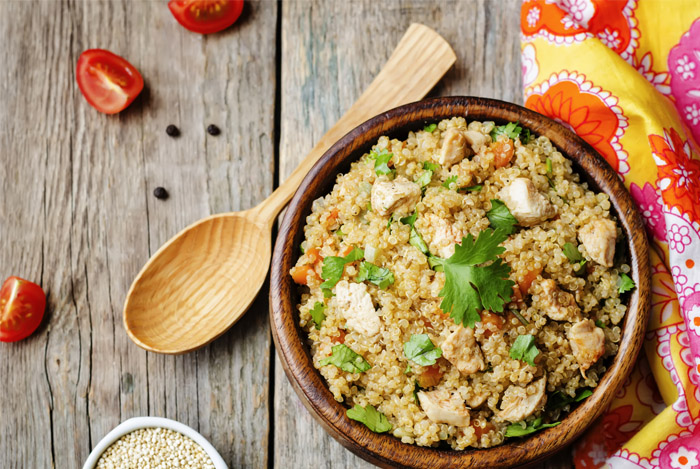 While most of us still may find trouble pronouncing quinoa (keen wah), it’s without a doubt a food we should get more comfortable with on the dinner table. If the ancient Incas ate it before battle, we just might stand to gain something from it as well.
While most of us still may find trouble pronouncing quinoa (keen wah), it’s without a doubt a food we should get more comfortable with on the dinner table. If the ancient Incas ate it before battle, we just might stand to gain something from it as well.
Quinoa is high in something called complete protein, containing all the essential amino acids necessary for your dietary requirements. These are typically found in lean meats, poultry, fish, eggs and dairy. That means eating this plant-based food will give you many of the key benefits of eating meat. Take note, vegetarians and vegans.
Quinoa is also a great source of fiber, providing you with 12 grams of fiber per serving – that means one serving of protein will give you nearly half of your day’s fiber. Because of this generous amount of fiber, quinoa can help you lower your cholesterol, improve colon health, and increase satiety – leaving you feeling fuller after eating it.
And that’s not even the half of it. For more information on the awesome benefits of quinoa, check out this blog post.
4. Lean Beef
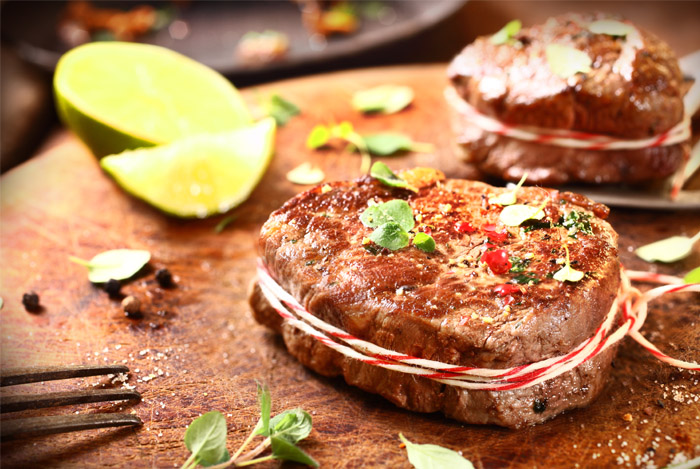 There’s been considerable fuss in the media lately concerning red meats. Some suggest it may be carcinogenic, while others laugh at the notion and encourage people to eat red meat on a regular basis.
There’s been considerable fuss in the media lately concerning red meats. Some suggest it may be carcinogenic, while others laugh at the notion and encourage people to eat red meat on a regular basis.
I’m comfortable letting science get to the bottom of it while continuing to eat grass-fed lean beef on occasion. Not every day, mind you.
One thing we can be certain about is how incredibly high lean beef is in protein, vitamin B12, iron, and other important nutrients like omega-3 fatty acids and antioxidant vitamin E. Beef also contains muscle-building nutrients like creatine and zinc.
However, beef is most certainly not a zero or negative calorie choice. Be careful with eating too much of the stuff, because it can be pretty tough on your metabolism. If your diet is already high in red meat in general, be sure to exercise even more than you think you should, and find balance in your caloric intake.
5. Salmon
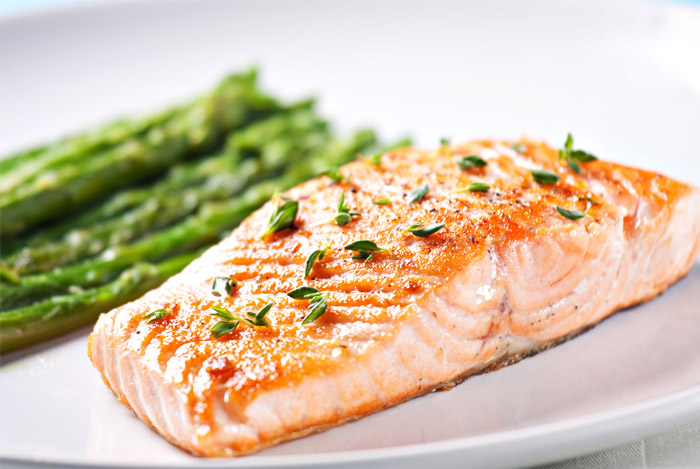 I’ve been on something of a salmon kick lately, and I’m quick to encourage everyone else start incorporating as much fish into their diets as possible.
I’ve been on something of a salmon kick lately, and I’m quick to encourage everyone else start incorporating as much fish into their diets as possible.
Why is this? I know what you’re thinking: Isn’t salmon full of fat?
Yes, it certainly is. But, it isn’t the kind of fat you have to worry about. Salmon contains long-chain omega-3 fatty acids which, if you didn’t know by now, are super beneficial to both body and mind.
Remember how earlier I was talking about finding something perfect to fill your plate? If broccoli is half your plate, a great complement would be a generous portion of wonderful, delicious salmon.
If you want to make sure you’re getting the healthiest salmon possible, seek out wild salmon over farmed salmon. Studies have found farm-raised salmon contains more pro-inflammatory omega-6s and fewer omega-3s than wild salmon.
6. Soy
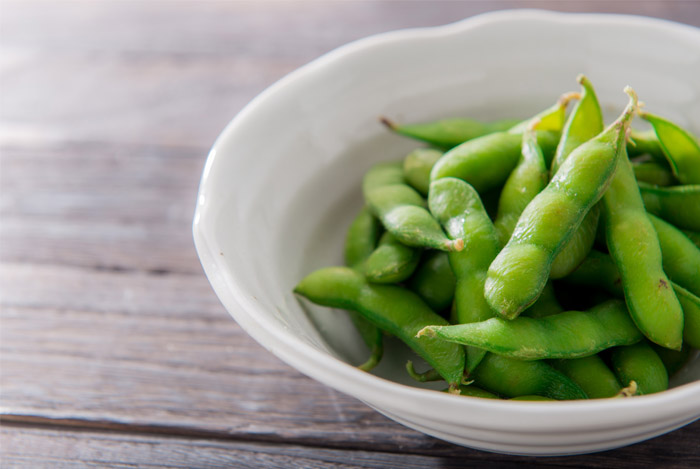 Some research has found soy to be equally as effective at building muscle and burning fat as whey protein, one of the most respected products out there for fitness nerds. That’s because it’s one of the few plant-based proteins that contains all of the essential amino acids.
Some research has found soy to be equally as effective at building muscle and burning fat as whey protein, one of the most respected products out there for fitness nerds. That’s because it’s one of the few plant-based proteins that contains all of the essential amino acids.
If you choose to snack on high protein soy foods, studies have shown it reduces your appetite, increases your satiety, and even improves your mood and mental ability.
Eating a half cup of edamame, for instance, will provide you with 8 grams of protein and only 95 calories. Because of the effects protein has on your digestion and satiety level, it’s understandable why soy is such a great choice for getting full while avoiding getting fat.
7. Chicken
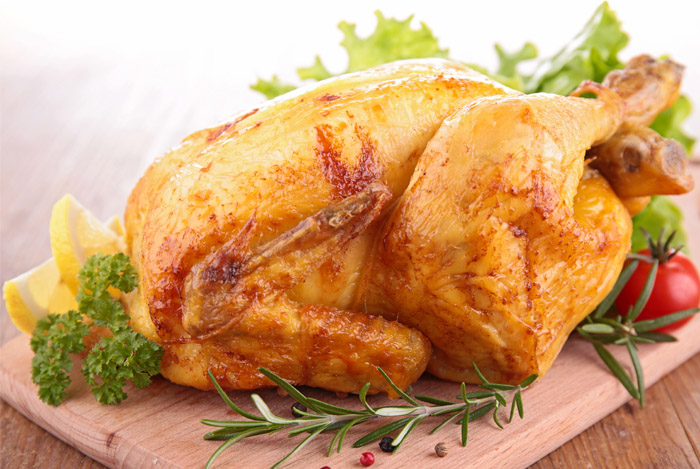 Chicken is one of the best sources of protein out there. Not because it’s got the highest amount you can find, but because it tends to be so lean, you won’t be filling yourself up with unhealthy fats.
Chicken is one of the best sources of protein out there. Not because it’s got the highest amount you can find, but because it tends to be so lean, you won’t be filling yourself up with unhealthy fats.
The protein in chicken kicks your digestive system and metabolism into high gear, making you burn more calories even when you’re at rest.
While chicken may contain more calories than veggies, it will provide your body with enough energy and proteins that will prevent you from feeling excessively hungry throughout the rest of the day after you’ve eaten it.
Tip: if you’re trying to shed fat, choose to bake or grill your chicken instead of frying it. And definitely don’t overdo it by adding a lot of fatty or salty sauces and glazes.
8. Bison
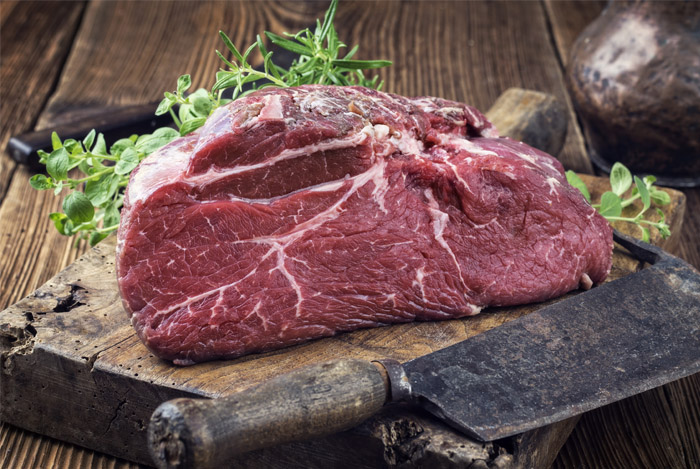 Here’s a food that is only recently beginning to make its mark on the mental landscapes of health-conscious meat eaters – bison. If you’ve never had it, I’d encourage you to try it out as soon as you get the chance.
Here’s a food that is only recently beginning to make its mark on the mental landscapes of health-conscious meat eaters – bison. If you’ve never had it, I’d encourage you to try it out as soon as you get the chance.
Bison is leaner than even the leanest beef out there. A 3.5 ounce serving of bison contains only 2 to 3 grams of fat compared to the considerably higher 8 to 9 grams in a similarly sized cut of beef.
A research team from the Cleveland and Salt Lake City VA medical centers studied the effects of participants eating either 12 ounce servings of beef or bison respectively per day, six days a week, for seven weeks. They then cleansed their system by eating neither meat for 30 days, then resumed by switching to the other meat for another seven weeks.
By the end, the researchers concluded that bison posed a significantly decreased risk to cardiovascular health, thanks to fewer markers of inflammation and oxidative stress.
That means, if you’re feeling like eating meat but don’t want to risk the added fat content and potentially negative health effects of beef (and if you’re more of an adventurous type in general), go find some bison.
9. Celery
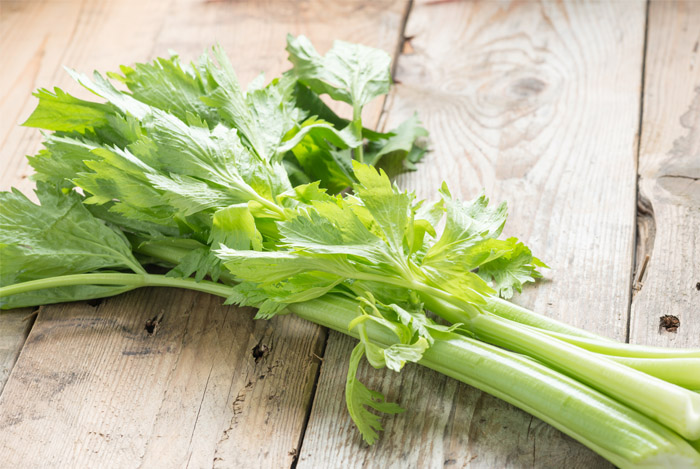 Celery is often referred to as a “negative-calorie” food. While that isn’t an entirely accurate description, it’s basically in the same vicinity as the bullseye – celery can make your body expend more energy to digest it than you’re actually consuming from the food itself.
Celery is often referred to as a “negative-calorie” food. While that isn’t an entirely accurate description, it’s basically in the same vicinity as the bullseye – celery can make your body expend more energy to digest it than you’re actually consuming from the food itself.
This happens because celery is 75% water and the other 25% is mostly fiber and other roughage. You are simply not going to be putting on the pounds by eating too much celery.
And, some people really enjoy the taste of celery. If you’re one of them, you should absolutely include it more often in your diet routine, because its nutrients (vitamins C, A, and K) are awesome, its fiber will boost your digestive health, and you can eat it to your heart’s (and belly’s) content.
10. Peas
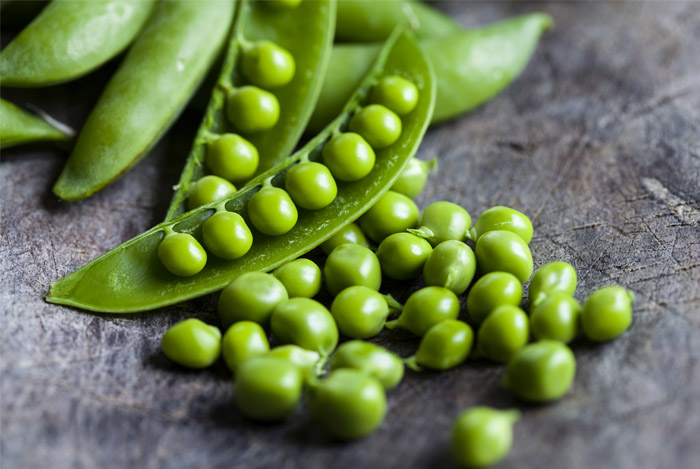 These little green guys are sadly under appreciated and underutilized in the health community. This may be because of an aversion some people have developed to them, especially considering how often they might have seemed like the most boring part of the dinner plate when we were children.
These little green guys are sadly under appreciated and underutilized in the health community. This may be because of an aversion some people have developed to them, especially considering how often they might have seemed like the most boring part of the dinner plate when we were children.
But they deserve much more respect than that, for sure.
Peas are a great source of protein, fiber, micronutrients, antioxidants, and other vitamins and minerals that make them a powerhouse of nutrition. A single cup of peas has less than a hundred calories, but packs all of these nutritional benefits.
Peas contain so much protein that they’ve become seriously popular in the fitness community, thanks to how easily digested they are, along with their high levels of muscle-building, fat-burning compounds like glutamine and branched chain amino acids. Commercial protein powders are even starting to prioritize pea proteins over others.
Some plant sources have been vilified for containing high levels of antinutrients that stop the way the body processes and absorbs minerals. Peas don’t contain any antinutrients compounds.
So please, if you’re looking to eat some great guilt-free food, give peas a chance.
That wasn’t so complicated, was it? The majority of these foods are probably already in your kitchen if you keep it well-stocked, and if not they aren’t hard to find. One of the best things I’ve found about this list is that the foods I included on it work exceptionally well together.
So, start mixing and matching these foods on a regular basis into your well-balanced diet.
Keeping weight off can be tricky – that’s for sure. But, if you have your sights set on maintaining a trim physique, knowing what you can eat to keep yourself feeling full without having to worry about the repercussions of that happy belly is half the battle.
What are your favorite filling, healthy foods? Leave a comment below!
The post 10 Filling Foods That Won’t Make You Fat appeared first on Nutrition Secrets.
http://www.nutritionsecrets.com/filling-foods-that-wont-make-you-fat/
No comments:
Post a Comment